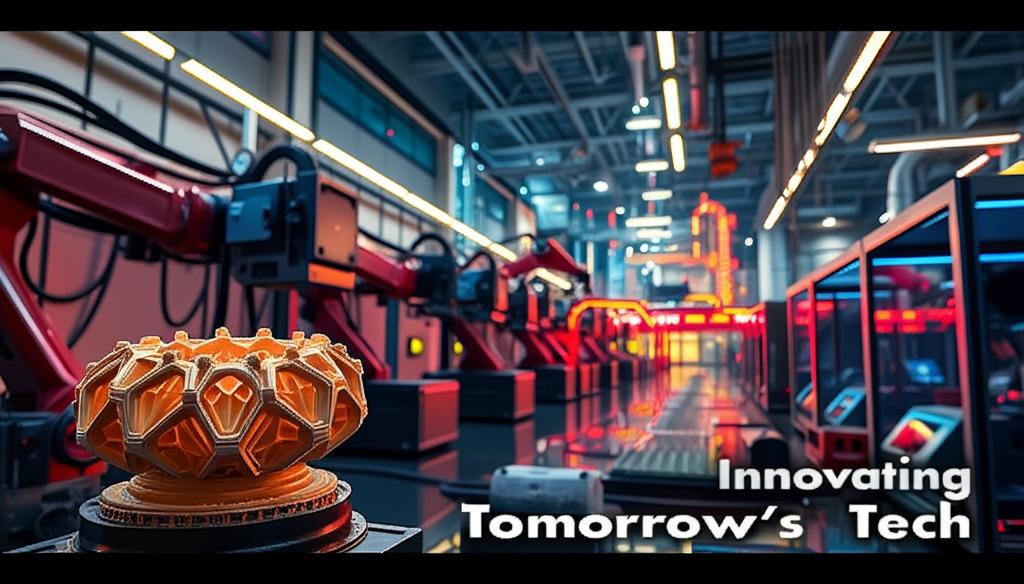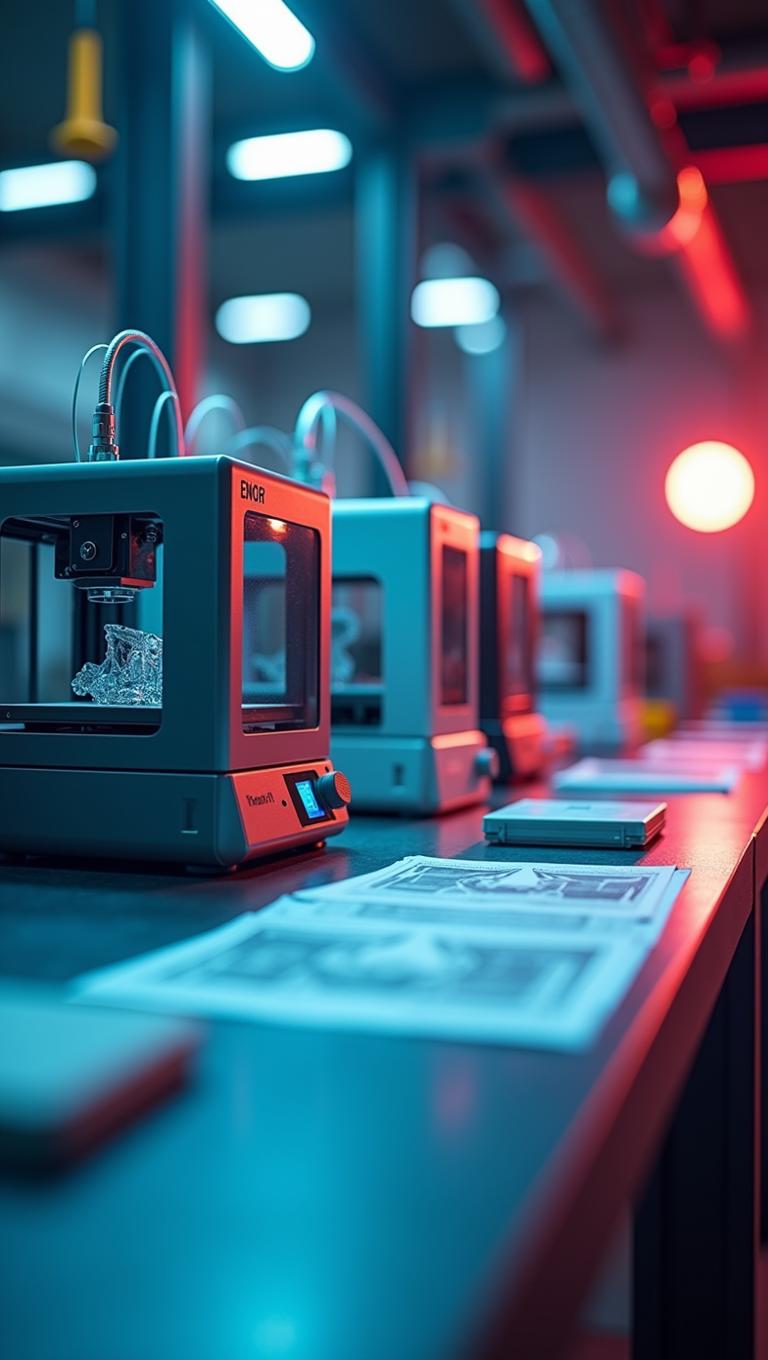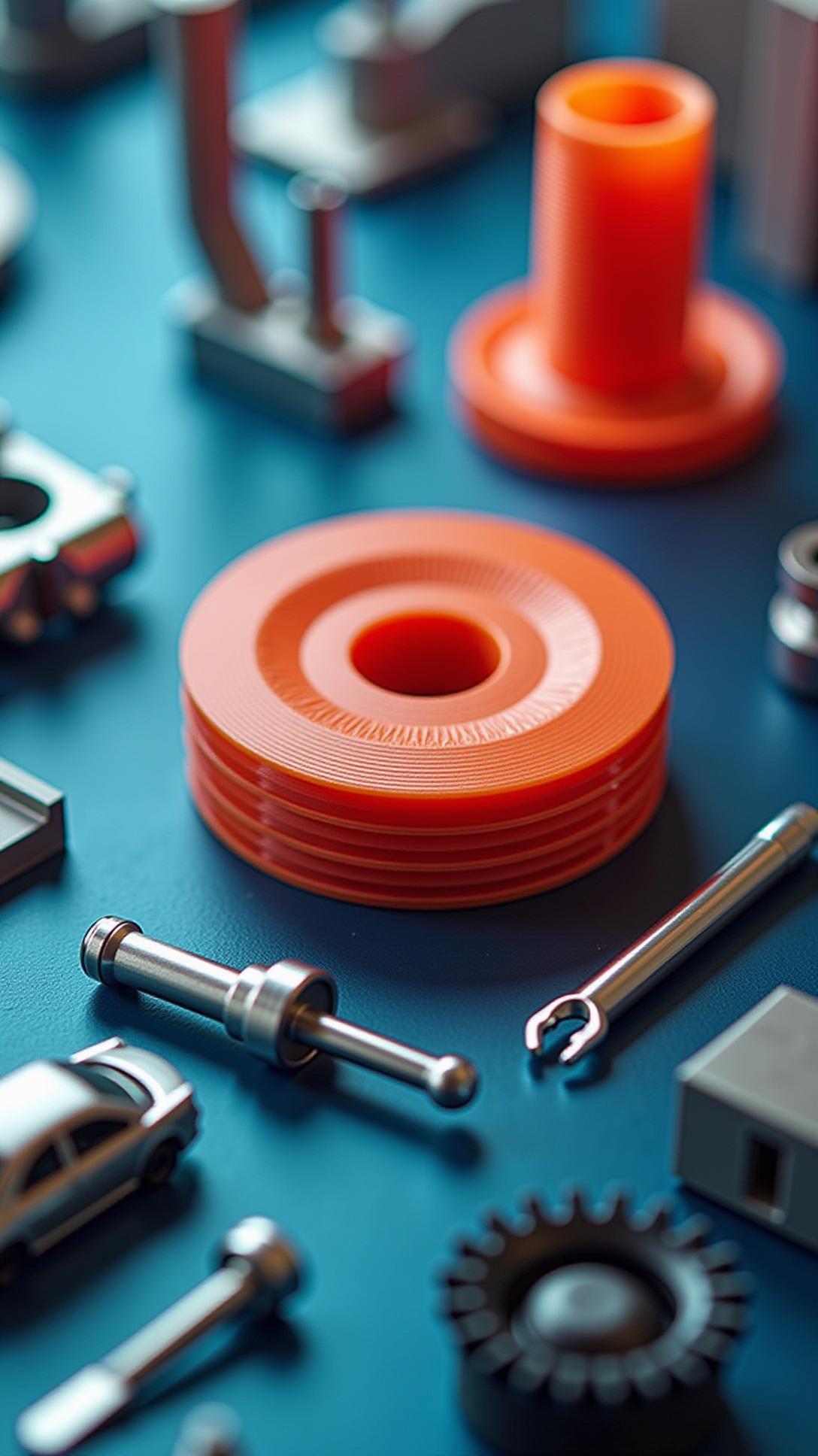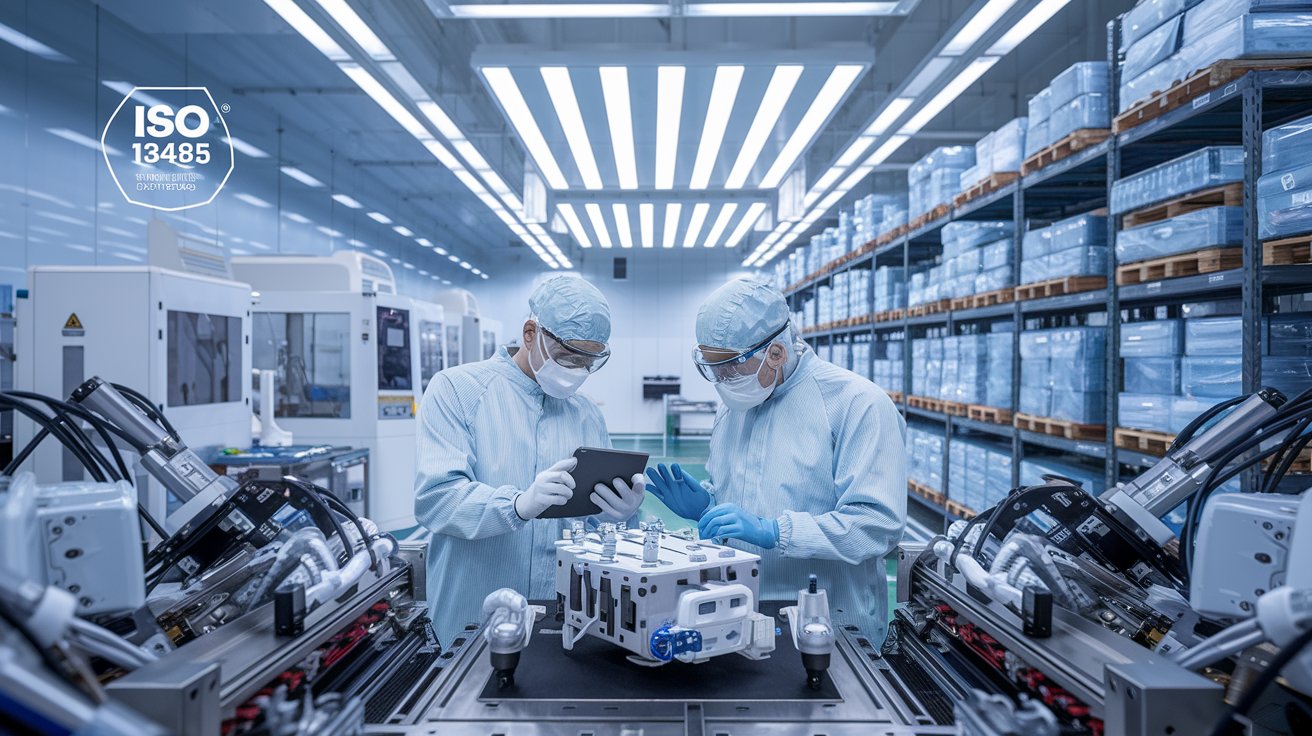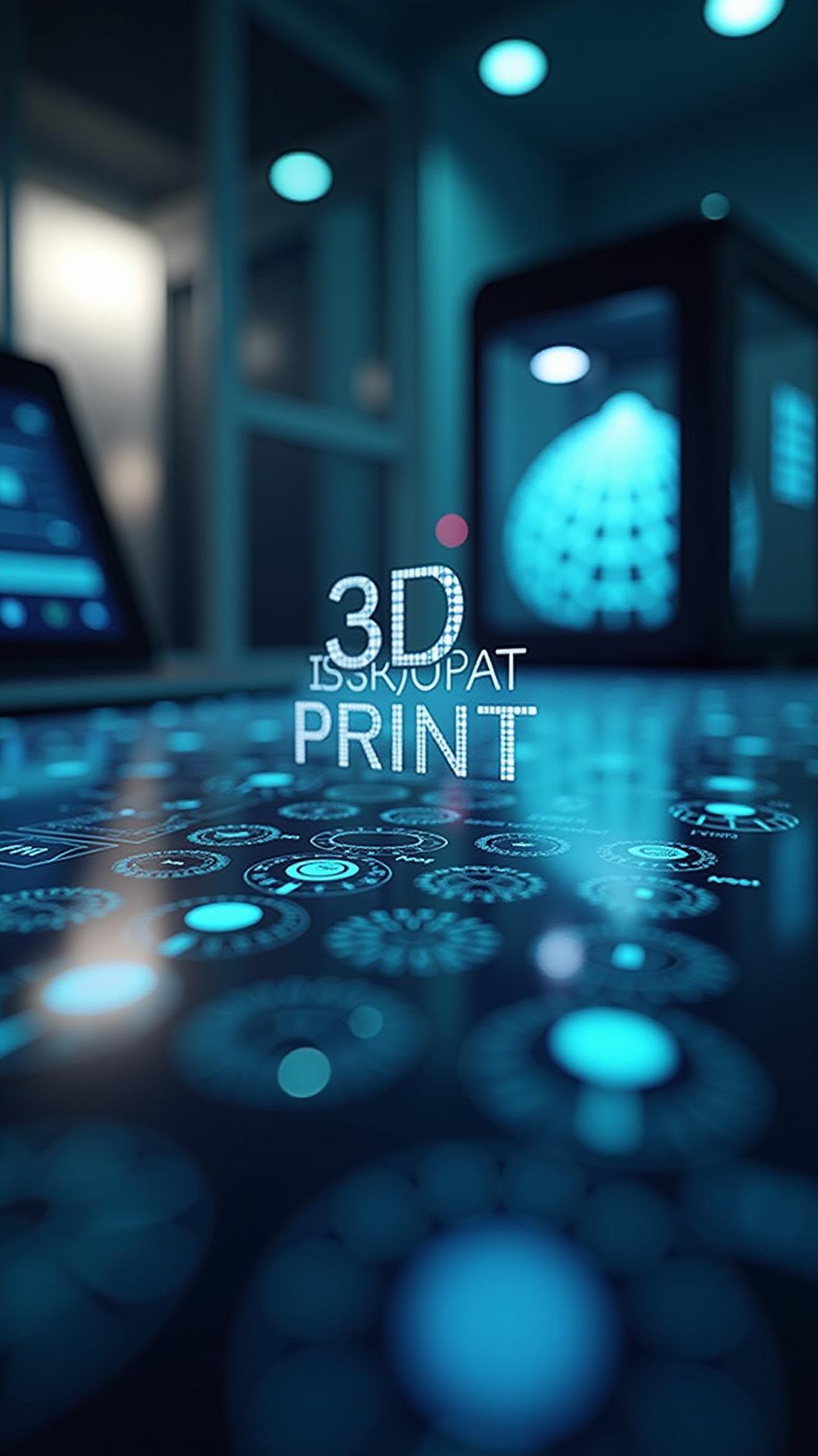Introduction
3D printing, also known as additive manufacturing, has evolved significantly since its inception in the 1980s. Initially viewed as a method for creating prototypes, advancements in precision, material diversity, and production capabilities have established 3D printing as a cornerstone of modern manufacturing. This article delves into groundbreaking innovations in 3D printing technology, illustrating how it is shaping a tech-driven future across various industries. By examining the latest trends and applications, we uncover how 3D printing is not only transforming production processes but also paving the way for creative solutions to complex problems.
The integration of 3D printing with advanced technologies such as artificial intelligence, bioprinting, and sustainable practices represents a leap forward for the manufacturing landscape. This integration is facilitating the development of customized products, optimizing supply chains, and enhancing operational efficiencies. Throughout this article, we will explore these innovations, their implications for different sectors, and the future potential of 3D printing in driving technological advancements. Join us as we navigate the impressive realm of 3D printing innovations that are set to redefine the possibilities for industries around the globe.
The Evolution of 3D Printing Technology
3D printing, also known as additive manufacturing, has undergone a remarkable transformation since its inception in the 1980s. Initially conceived as a rapid prototyping method for designers and engineers, 3D printing has evolved dramatically to become a critical technology across numerous industries. This chapter delves into its historical development, highlighting pivotal milestones and advancements that have contributed to its current prominence.
The journey of 3D printing began in 1981 when Hideo Kodama developed the first rapid prototyping system, utilizing a photopolymer resin that solidified when exposed to ultraviolet light. However, it was not until 1986 that Charles W. Hull introduced stereolithography, the first true 3D printing technology. Hull’s innovation allowed for the layering of materials to create complex geometries, setting the stage for future developments.
The 1990s witnessed the emergence of several key technologies, including selective laser sintering (SLS) and fused deposition modeling (FDM). SLS, pioneered by Carl Deckard, enabled the use of powdered materials, which significantly expanded the range of possible applications. FDM, developed by Scott Crump, became popularized by Stratasys and allowed creators to produce parts from thermoplastic filaments. These innovations marked the transition from purely prototyping to manufacturing parts in small quantities.
Entering the 2000s, 3D printing saw a surge in accessibility, primarily due to the expiration of certain patents, which encouraged the emergence of low-cost consumer 3D printers. RepRap, the open-source 3D printer project launched in 2005, played a pivotal role in democratizing 3D printing technology by enabling hobbyists and innovators to create their own machines. This surge in adoption led to diverse applications ranging from hobbyist projects to early-stage production purposes.
Advancements in materials science have played a crucial role in the evolution of 3D printing technologies. The development of biocompatible materials has revolutionized healthcare applications, enabling 3D printed medical devices and prosthetics. Metals, ceramics, and composites are now commonly employed in industries such as aerospace and automotive, showcasing their potential for lightweight, durable components.
3D printing technology continues to advance, with emerging techniques like digital light processing (DLP) and binder jetting pushing the boundaries of speed and precision. These advancements not only indicate a maturation of 3D printing but also suggest a promising future where customization, sustainability, and efficiency will dominate the landscape of manufacturing and production.
Applications of 3D Printing Across Industries
Transforming Sectors with Additive Manufacturing
3D printing has rapidly expanded its applications across numerous sectors, revolutionizing manufacturing processes and enabling innovations that were once thought impossible. The capacity to create complex geometries and custom designs on-demand is particularly valuable in industries like healthcare, aerospace, automotive, and consumer goods.
In healthcare, 3D printing stands out for its capability to personalize medical treatments. One remarkable application is in the creation of patient-specific implants and prosthetics. Surgeons can utilize detailed scans from patients to produce prosthetic limbs that perfectly fit an individual’s anatomy, enhancing comfort and functionality. Moreover, bioprinting, which involves the layer-by-layer deposition of living cells, is paving the way for the development of tissues and organs, dramatically reducing the need for donor matches and possibly revolutionizing transplant surgeries.
The aerospace industry, characterized by the necessity for lightweight yet durable components, has witnessed profound enhancements through additive manufacturing. Companies are leveraging 3D printing to fabricate intricate parts that can withstand extreme conditions while minimizing weight. This results in enhanced fuel efficiency and reduced emissions in aircraft. For instance, GE Aviation has developed fuel nozzles via 3D printing that are significantly lighter and more efficient compared to traditionally manufactured components, demonstrating substantial cost savings over the lifespan of an aircraft.
Automotive manufacturing has also embraced 3D printing, especially in the prototyping phase. With the ability to produce rapid prototypes, manufacturers can iterate designs more quickly, testing various configurations and tailoring vehicles to meet consumer demands effectively. 3D printing is increasingly used for producing end-use parts as well, such as customized dashboards and complex engine components, streamlining inventory and reducing lead times.
The consumer goods sector is seeing a shift as well, with brands using 3D printing to deliver bespoke products. Companies can now create personalized items, from jewelry to home decor, catering to niche markets. This customization enhances customer engagement and satisfaction, making consumers feel more connected to the products they purchase.
These applications illustrate how 3D printing is not just a manufacturing choice but a transformative strategy across various industries, shaping a tech-driven future that prioritizes efficiency, customization, and innovation.
Sustainable Practices in 3D Printing: Minimizing Waste and Energy Consumption
The impact of sustainability permeates various manufacturing processes, and 3D printing technologies are at the forefront of this evolution. As industries seek eco-friendly alternatives to traditional manufacturing methods, additive manufacturing stands out for its potential to reduce waste and cut down on energy consumption. By creating products layer by layer, 3D printing inherently allows for greater precision, which minimizes excess material usage—a key contributor to environmental degradation.
Innovative Techniques for Waste Reduction
One of the foremost ways that 3D printing enhances sustainability is through its capacity for material optimization. Traditional manufacturing processes often involve subtractive techniques, where excess material is removed from a larger block, generating substantial waste. In contrast, additive manufacturing deposits only the material necessary for the final product. This leads to resource conservation and a decrease in by-products. Techniques such as generative design empower designers to craft complex geometries that utilize the least amount of material without compromising strength or functionality.
Recycling initiatives within 3D printing are also gaining traction. Companies are developing biodegradable filaments or recycled plastics that can be repurposed into new products. This transition fosters a circular economy, whereby materials can be continually recycled rather than discarded, reducing landfill waste significantly.
Energy Efficiency and Sustainable Materials
Another vital aspect of sustainable practices involves energy consumption. Innovative printing technologies, like selective laser sintering (SLS) and fused deposition modeling (FDM), utilize significantly less energy compared to traditional methods. The ability to print on-demand also reduces the need for large warehouses and transportation of raw materials, further lowering overall energy usage.
The development of eco-friendly printing materials is also a crucial factor in driving sustainability in the 3D printing industry. Research into bio-based materials and composites that require less energy to manufacture is increasingly becoming a reality. For instance, innovations like plant-based resins and filament made from recycled waste introduce sustainable sourcing into the production pipeline, aligning manufacturing processes with environmental objectives.
Through the integration of these forward-thinking techniques, the 3D printing landscape is steadily evolving toward a more sustainable future. The move to eco-conscious manufacturing not only meets consumer demand for lower environmental impact products but also establishes new avenues for the industries where additive manufacturing is gaining ground. This synergy between technology and sustainability paves the way for the next generation of manufacturing innovation.
Integration of AI and 3D Printing: Enhancing Design and Production Processes
The integration of artificial intelligence (AI) in 3D printing signifies a revolutionary leap within the additive manufacturing domain, greatly optimizing both design and production processes. By employing sophisticated algorithms and machine learning techniques, AI empowers designers to create intricate and efficient models that were previously impossible or impractical to fabricate. This synergy not only streamlines workflows but also maximizes the potential of 3D printing technology as a cornerstone of a tech-driven future.
AI in Design Optimization
AI assists in design optimization by analyzing vast datasets to identify the most efficient structures that maintain robustness while minimizing material usage. Generative design, driven by AI, allows designers to input parameters such as weight, strength, and material constraints, after which the software generates numerous design alternatives. These innovations produce an array of possibilities, ultimately leading to designs that are stronger and lighter than conventional approaches. Moreover, this process enhances creativity by providing alternatives that human designers may not conceive under traditional workflows.
- Enhanced creativity through generative design algorithms.
- Adaptation of designs based on real-time data input.
- Reduction in material waste and prototyping costs.
AI in Production Automation
On the production side, AI significantly enhances the efficiency of 3D printing processes. Machine learning algorithms analyze production data to refine settings such as temperature and speed in real time, ensuring optimal printing conditions and reducing the risk of defects. AI-driven predictive maintenance improves machine downtime predictions, allowing manufacturers to address issues proactively and maintain high production rates. This level of automation not only boosts productivity but also contributes to the sustainability practices discussed in the previous chapter by minimizing waste and energy consumption during production.
- Real-time monitoring of production variables.
- Predictive analytics for maintenance and efficiency.
- Automated adjustments to enhance print quality and reduce failure rates.
The alliance of AI and 3D printing sets the stage for a tech-driven future that embraces efficiency, creativity, and innovation. As both fields continue to evolve, they promise to significantly impact various industries by making manufacturing more responsive and adaptive. The next chapter will delve into the future of 3D printing technologies, addressing potential breakthroughs and challenges that lie ahead as these advancements unfold.
The Future of 3D Printing Technologies: Potential Breakthroughs and Challenges Ahead
The landscape of 3D printing is poised for transformative growth as we enter an era where technology converges with creativity. Innovations in techniques and materials signify a trajectory that not only enhances production capabilities but also redefines what is possible across various industries. One imminent breakthrough is the development of bio-printing technologies that could lead to the printing of complex tissues and organs. As the demand for organ transplants grows, advancements in 3D-printed scaffolds could pave the way for regenerative medicine that integrates seamlessly with human biology.
Anticipated Trends in Additive Manufacturing
The trends shaping the future of additive manufacturing are deeply interconnected with advancements in machine learning, material science, and sustainable practices. The integration of smart materials, which respond to environmental changes, points to a future where 3D-printed objects exhibit dynamic functionalities. These materials could revolutionize sectors such as aerospace and automotive engineering, where performance and adaptability are paramount.
- Increased Automation: As robotics and AI work hand-in-hand with 3D printing, automating the design-to-production workflow could reduce errors and enhance efficiency.
- Sustainable Materials: The shift towards biodegradable and recycled filament materials is not merely trendy but necessary, as industries face pressure to minimize their environmental footprint.
- Distributed Manufacturing: The ability to print on-site could substantially lower transportation costs and time, transforming supply chains into more resilient and responsive networks.
Challenges in the Path of Innovation
Despite the optimistic outlook, the evolution of 3D printing technologies is fraught with challenges. One major hurdle is regulatory compliance, especially when it comes to bio-printed materials and components used in critical applications like healthcare. The development of universal standards will be crucial to ensure safety and efficacy while fostering innovation.
Technological disparities may create divides between industries and regions. Smaller firms might find it challenging to keep pace with advancements, which could limit their competitiveness. Addressing this disparity through accessible training and resources will be essential for inclusive growth in the sector.
As the intersection of AI and 3D printing continues to expand, the path forward will be paved with groundbreaking breakthroughs, yet accompanied by significant obstacles that must be navigated thoughtfully. The future of additive manufacturing promises to be compelling, compelling a reevaluation of what technology can achieve in tandem with human ingenuity.
Conclusion and Call to Action: 3D Printing Innovations for a Tech-Driven Future
The exploration of 3D printing technologies reveals fascinating advancements poised to significantly influence various industries. As this article has illustrated, the evolution of additive manufacturing is not merely about the tools involved but rather the profound implications for production, customization, and sustainability. With increasing capabilities in materials science and design software, coupled with the integration of artificial intelligence and machine learning, the landscape of 3D printing is set to transform dramatically.
Key Takeaways from 3D Printing Innovations
The primary insights resonate through several themes:
- Customization at Scale: The ability to produce highly personalized products without the need for traditional manufacturing processes allows businesses to cater to consumer preferences more effectively.
- Material Diversity: Innovations in material science enable the use of composites, metals, and even bio-materials, broadening the applications of 3D printing across sectors such as aerospace, healthcare, and automotive.
- Sustainability and Waste Reduction: 3D printing can considerably lower material waste, promoting a more sustainable approach to manufacturing. Techniques like additive production can repurpose waste into new materials.
- Supply Chain Efficiency: Immediate production capabilities can enhance supply chain responsiveness, allowing companies to pivot quickly in demanding markets while reducing inventory overhead.
Encouraging Adoption in Various Industries
As we move forward into a tech-driven future, the call to action for industries is clear: consider adopting 3D printing innovations. Businesses must evaluate how these technologies can streamline their processes, reduce costs, and foster innovation. Whether you are in design, manufacturing, healthcare, or retail, there are opportunities to integrate 3D printing into your operational model.
Start with pilot projects that allow your team to experiment with different applications of additive manufacturing. Collaborating with established 3D printing firms can also provide insights and access to cutting-edge resources that may not yet be in-house. Additionally, fostering a culture of innovation within your organization will empower your workforce to leverage these technologies creatively and effectively.
The future of 3D printing is bright, but it requires proactive engagement from industries ready to embrace change. As you contemplate the innovations discussed throughout this article, think about ways to pivot your business model that align with these advancements in additive manufacturing. The time to adapt is now—your future may depend on it.
Conclusions
3D printing has transitioned from a niche technology into a revolutionary method of production across many fields. The innovations discussed in this article illustrate its versatility and the profound impact it can have on industries ranging from healthcare to aerospace. The ability to create complex geometries and personalized products, combined with the sustainability aspects of 3D printing, highlights its potential to address contemporary manufacturing challenges. As we move forward, it is vital for businesses to embrace these technologies to remain competitive in a rapidly evolving marketplace.
As we look to the future of 3D printing, the synergy between this technology and emerging fields such as artificial intelligence and bioprinting promises to usher in a new era of manufacturing. The ongoing developments in material science and production techniques will likely yield even more innovative applications, pushing the boundaries of what is possible. Thus, understanding and integrating these innovations will be essential strategy for organizations aiming to thrive in a tech-driven future.

